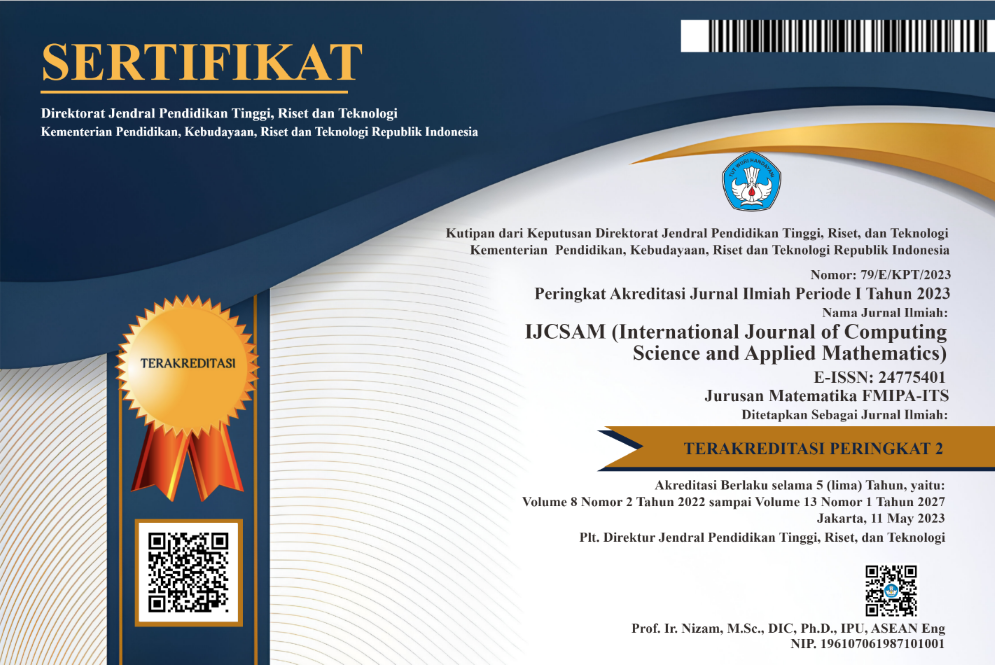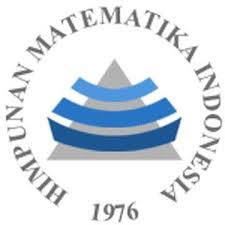Comparative Study of KNN, SVM and Decision Tree Algorithm for Student’s Performance Prediction
Abstract
Keywords
Full Text:
PDFReferences
B. A. N. P. Tinggi, “Buku i naskah akademik. akreditasi institusi perguruan tinggi. jakarta,” 2019.
C. Sa, D. Ibrahim, E. Hossain, and M. bin Hossin, “Student performance analysis system (spas),” in The 5th International Conference on Information and Communication Technology for The Muslim World (ICT4M), 2014, pp. 1–6.
I. Singh, A. Sabitha, and A. Bansal, “Student performance analysis using clustering algorithm,” in 2016 6th International Conference-Cloud System and Big Data Engineering (Confluence), 2016, pp. 294–299.
T. Devasia, T. Vinushree, and V. Hegde, “Prediction of students performance using educational data mining,” in 2016 International Conference on Data Mining and Advanced Computing (SAPIENCE), 2016, pp. 91–95.
M. Quadri and N. Kalyankar, “Drop out feature of student data for academic performance using decision tree techniques,” Global Journal of Computer Science and Technology, 2010.
R. Asif, A. Merceron, S. Ali, and N. Haider, “Analyzing undergraduate students’ performance using educational data mining,” Computers & Education, vol. 113, pp. 177–194, 2017.
A. Vihavainen, “Predicting students’ performance in an introductory programming course using data from students’ own programming process,” in 2013 IEEE 13th International Conference on Advanced Learning Technologies, 2013, pp. 498–499.
G. Kostopoulos, A.-D. Lipitakis, S. Kotsiantis, and G. Gravvanis, “Predicting student performance in distance higher education using active learning,” in International Conference on Engineering Applications of Neural Networks, 2017, pp. 75–86.
R. Conijn, A. Van den Beemt, and P. Cuijpers, “Predicting student performance in a blended mooc,” Journal of Computer Assisted Learning, vol. 34, no. 5, pp. 615–628, 2018.
A. Daud, N. Aljohani, R. Abbasi, M. Lytras, F. Abbas, and J. Alowibdi, “Predicting student performance using advanced learning analytics,” in Proceedings of the 26th international conference on world wide web companion, 2017, pp. 415–421.
Z. Yildiz and A. Baba, “Evaluation of student performance in laboratory applications using fuzzy decision support system model,” in 2014 IEEE Global Engineering Education Conference (EDUCON), 2014, pp. 1023–1027.
N. Meenakshi and N. Pankaj, “Application of fuzzy logic for evaluation of academic performance of students of computer application course,” International Journal for Research in Applied Science & Engineering Technology (IJRASET), vol. 3, no. 10, pp. 260–7, 2015.
E. Rainarli and A. Romadhan, “Perbandingan simple logistic classifier dengan support vector machine dalam memprediksi kemenangan atlet,” Journal of Information Systems Engineering and Business Intelligence, vol. 3, no. 2, pp. 87–91, 2017.
Y. Paul, V. Goyal, and R. Jaswal, “Comparative analysis between svm & knn classifier for emg signal classification on elementary time domain features,” in 2017 4th International Conference on Signal Processing, Computing and Control (ISPCC), 2017, pp. 169–175.
R. Nugrahaeni and K. Mutijarsa, “Comparative analysis of machine learning knn, svm, and random forests algorithm for facial expression classification,” in 2016 International Seminar on Application for Technology of Information and Communication (ISemantic), 2016, pp. 163–168.
V. Patil, S. Suryawanshi, M. Saner, V. Patil, and B. Sarode, “Student performance prediction using classification data mining techniques,” International Journal of Scientific Development and Research, vol. 2, no. 6, pp. 163–167, 2017.
A. Khasanah and A. Harwati, “A comparative study to predict students performance using educational data mining techniques,” in IOP Conference Series: Materials Science and Engineering, vol. 215, no. 2, 2017, pp. 1–7.
G. Gowri, R. Thulasiram, and M. Baburao, “Educational data mining application for estimating students performance in weka environment,” in IOP Conference Series: Materials Science and Engineering, vol. 263, 2017, p. 032002.
M. Ciolacu, A. Tehrani, R. Beer, and H. Popp, “Education 4.0fostering student’s performance with machine learning methods,” in 2017 IEEE 23rd International Symposium for Design and Technology in Electronic Packaging (SIITME), 2017, pp. 438–443.
S. Wiyono and T. Abidin, “Comparative study of machine learning knn, svm, and decision tree algorithm to predict students performance,” International Journal of Research - Granthaalayah, vol. 7, no. 1, pp. 190–196, 2019.
B. Lantz, Machine learning with R. Packt publishing ltd, 2013.
DOI: http://dx.doi.org/10.12962%2Fj24775401.v6i2.4360
Refbacks
- There are currently no refbacks.
View My Stats

International Journal of Computing Science and Applied Mathematics by Pusat Publikasi Ilmiah LPPM, Institut Teknologi Sepuluh Nopember is licensed under a Creative Commons Attribution-ShareAlike 4.0 International License.
Based on a work at https://iptek.its.ac.id/index.php/ijcsam.






